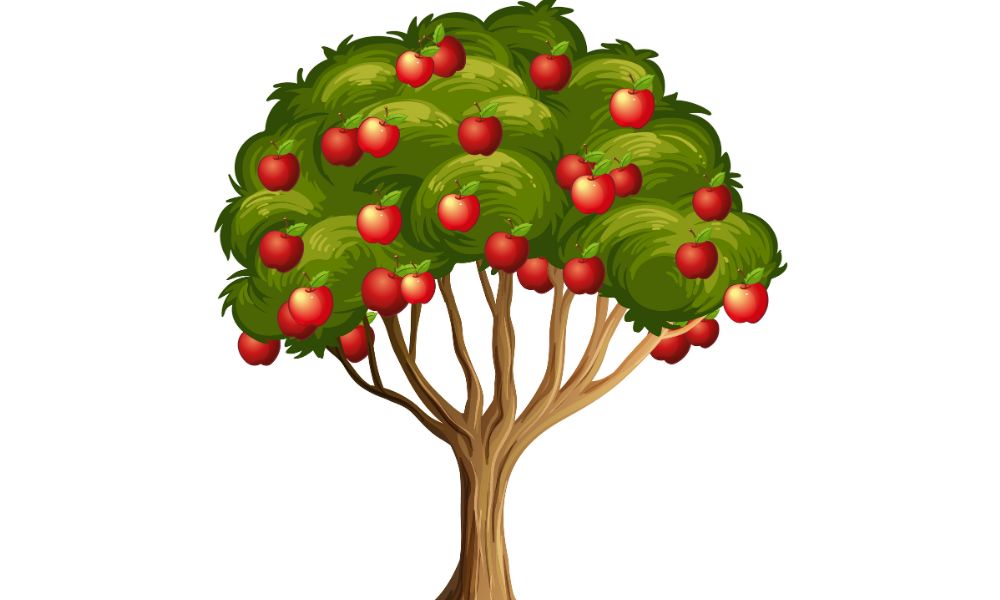You’re crafting your next great sound design films and want to hit that perfect note – it’s not just about what you create, but also about how you record it. You’re thinking, “I need the *best* voice recording software, but with a myriad of options out there, how do I choose?” Well, fear no more, we’ve got you covered! From cinematic maestros to budding film artists, we’re here to tune your ears to the 11 best voice recording software solutions. For better details, visit our website “Rian/Hunter Production“.
1. Audacity
Perfect for budding sound designers and filmmakers, Audacity is a free, open-source software that punches above its weight. It excels at recording live audio and computer playback, making it great for tasks from voice-overs to capturing streaming audio.
Audacity supports 16-bit, 24-bit, and 32-bit samples, catering to a wide array of sound design needs. Moreover, it lets you convert tapes and records into digital recordings, an essential feature for those working with archival audio.
Its robust editing tools allow for sound cutting, splicing, and mixing, empowering you to unleash your audio creativity. Plus, Audacity’s user-friendly interface and support for numerous plugins make it both accessible and customizable.
In short, Audacity blends versatility and power without breaking your budget, making it a go-to choice in the world of voice recording software.
2. Adobe Audition
Adobe Audition is the all-star player in the audio recording field, offering a feature-rich and professional environment for sound design films. It’s equipped with a comprehensive toolset for creating, mixing, editing, and restoring audio content, allowing your cinematic soundscapes to come alive.
A remarkable aspect of Adobe Audition is its seamless integration with other Adobe apps like Premiere Pro. This connectivity enhances your workflow and encourages collaboration, making it an excellent choice for team-based projects.
Adobe Audition’s advanced spectral editing features let you visualize and manipulate your audio with precision. Its noise reduction and restoration capabilities also ensure you can deliver clean, high-quality soundtracks every time.
Even though it’s a professional-grade tool, Adobe Audition’s interface is intuitive and user-friendly, making it accessible for both seasoned audio engineers and newcomers to sound design. It is a versatile and reliable choice that can give your sound design films the professional edge they deserve.
3. Logic Pro X
For those in the Apple ecosystem, Logic Pro X is like a seasoned conductor guiding your audio symphony. Its professional-grade recording, editing, and mixing features are encapsulated in an intuitive, user-friendly interface, making it easy for both beginners and experienced users.
Beyond its core features, Logic Pro X stands out with its expansive library of royalty-free music and sound effects. It’s like having a treasure trove of audio resources at your disposal, ready to be utilized in your next sound design film.
One of Logic Pro X’s highlights is its advanced MIDI sequencing and processing options. These features allow for intricate soundscaping and layering, opening a whole new world of creativity for your projects. Coupled with its wide array of plugins and software instruments, Logic Pro X provides a comprehensive toolkit for your audio needs.
Logic Pro X also integrates seamlessly with other Apple apps and software, ensuring a streamlined and efficient workflow. So, whether you’re an indie filmmaker working on your debut film or a seasoned professional creating your next masterpiece, Logic Pro X can help you hit the right note every time.
4. Pro Tools
Pro Tools is the Spielberg of audio recording software — an industry stalwart renowned for its quality and robustness. It’s a staple in professional studios worldwide due to its reliable editing capabilities, high-quality sound output, and diverse range of plugins.
Whether you’re recording a dialogue, creating a sound effect, or mixing a soundtrack, Pro Tools offers precision and control like no other. It’s a powerful audio engine and expansive MIDI capabilities ensure that you can create and manipulate your sounds to perfection.
One of Pro Tools’ standout features is its cloud collaboration functionality. This allows multiple users to work on a project simultaneously, making it perfect for larger production teams or remote workflows. The ability to share sessions, tracks, or even entire projects simplifies teamwork and coordination.
Another benefit of Pro Tools is its compatibility with virtually every audio interface out there. This ensures that no matter what hardware you use, you can still harness the power of Pro Tools for your sound design projects.
In summary, Pro Tools is a powerhouse of audio recording. It offers a comprehensive, professional-grade platform that can elevate your sound design films to a whole new level.
5. GarageBand
GarageBand is the hidden gem in the world of audio recording software. This free software, available to all Mac users, is a perfect blend of simplicity and power, making it ideal for beginners and seasoned users alike.
Though it may seem unassuming, GarageBand is no slouch when it comes to capabilities. Also, it offers intuitive recording and editing features that allow you to capture and tweak your audio with ease. Its streamlined interface ensures that you can focus more on your creativity and less on technicalities.
What sets GarageBand apart is its extensive library of instruments and loops. From vintage drum kits to orchestral strings, you can find sounds to complement any mood or scene in your film. It’s like having a world-class band at your fingertips, ready to perform at your command.
Moreover, GarageBand offers a range of customizable settings and presets, allowing you to tailor your audio environment according to your needs. You can also create, save, and recall different mix settings, which is a boon when working on multiple projects.
6. WavePad

If you’re looking for dependable and versatile voice recording software, WavePad rides in like a trusty steed. It’s an excellent choice for anyone from ambitious amateurs to professional sound engineers. Its budget-friendly nature ensures you don’t have to break the bank to achieve high-quality sound design.
WavePad comes packed with capabilities. It allows you to record and edit music, voice, and other audio recordings with relative ease. With WavePad, you have the freedom to make adjustments to your heart’s content, bringing out the best in your audio clips.
One notable feature is the software’s extensive audio effects suite. You can apply effects like amplification, normalization, equalization, and many more to enhance your audio recordings. For sound design in films, these effects can be invaluable in setting the right mood and atmosphere.
What’s more, WavePad also offers spectral analysis (FFT), speech synthesis (text-to-speech), and voice changer. This can open up new possibilities for your sound design, providing you with even more ways to get creative with your audio.
7. Ableton Live
Ableton Live isn’t your typical voice recording software – it’s an electronic music juggernaut. It revolutionizes the traditional approach to music production with its innovative design and versatile feature set, making it an ideal choice for those seeking a unique audio creation platform.
Moreover, unlike other software that’s primarily geared towards studio recording, Ableton Live is crafted with live performances in mind. This emphasis on real-time creation and manipulation of audio makes it a standout choice for creating dynamic and evolving soundtracks for your films.
The beating heart of Ableton Live is the Session View, a non-linear space for recording and playing back audio and MIDI clips. Also, this feature allows for a more flexible and experimental approach to audio arrangement, freeing you from the constraints of a traditional timeline.
But that’s not all. Ableton Live comes bundled with a plethora of built-in instruments, effects, and sounds. Whether you need a pumping electronic beat or an ambient drone, Ableton Live’s expansive sound library has got you covered. With its advanced automation and modulation options, you can breathe life into your sounds, adding movement and depth that will captivate your audience.
Ableton Live isn’t just a voice recording software – it’s a full-fledged musical instrument. It’s intuitive design and unique features invite you to redefine the boundaries of sound design. Whether you’re creating atmospheric soundscapes for a sci-fi flick or an emotive score for a drama, Ableton Live offers the tools and freedom to realize your audio vision.
8. FL Studio
FL Studio, formerly known as FruityLoops, is a name that’s etched in the hall of fame of audio recording software. It’s a complete software music production environment, providing you with everything you need to compose, arrange, record, edit, mix, and master professional-quality music.
FL Studio shines in its intuitive interface and its impressive step sequencer, allowing for fast percussion programming and sequencing. Its piano roll is renowned as one of the best in the business, perfect for manipulating MIDI. These features combined make it an excellent choice for electronic and beat-driven genres, as well as for intricate sound design in film.
Moreover, the software comes with a variety of virtual instruments that can cater to a wide range of sound design needs. From synths and samplers to drum machines, FL Studio’s rich library of sounds is a playground for any sound designer.
What’s more, FL Studio boasts robust audio editing features. You can arrange, slice, stretch, pitch, and shift audio freely, allowing for a high degree of creativity and flexibility in your projects.
On the collaboration front, FL Studio also offers cloud-based project sharing. This feature makes it easy to share projects with others, streamlining collaboration and teamwork.
10. Cubase
Cubase, developed by Steinberg, is a force to be reckoned with in the landscape of voice recording software. It offers a comprehensive set of tools for recording, editing, and mixing audio, delivering professional-grade capabilities in an accessible package.
At its core, Cubase is an audio/MIDI DAW that provides advanced multitrack editing and mixing capabilities. This makes it suitable for a wide range of audio projects, from simple voice recordings to intricate sound design for films.
One standout feature of Cubase is its VST (Virtual Studio Technology) integration. This allows you to use a wide variety of plugins to extend its capabilities and tailor the software to your specific needs. From high-quality instruments to advanced audio effects, the possibilities are nearly endless.
Cubase also shines in its ability to handle MIDI. With its powerful MIDI editor and a wide array of virtual instruments, Cubase can create and manipulate MIDI tracks with precision and ease. This can add an extra dimension to your sound design, offering more options for musical scoring or sound effects.
Moreover, Cubase’s audio editing features are robust and flexible. You can cut, move, stretch, and pitch audio with precision, ensuring you can achieve the perfect sound for your film.
Cubase also offers advanced features like surround sound support and a score editor, making it a complete package for audio production.
11. Reaper
Reaper, short for Rapid Environment for Audio Production, Engineering, and Recording, packs a wallop in the world of audio recording software. It offers the flexibility of a lightweight program while still providing the power and features of a full-fledged digital audio workstation.
Reaper excels in offering a full multitrack audio and MIDI recording environment. You can record, edit, process, mix, and master audio all in one place. Its feature set covers a broad spectrum of needs, making it ideal for everything from recording simple voiceovers to designing intricate soundscapes for films.
One standout aspect of Reaper is its extensive customization options. From modifying the user interface to scripting complex workflows, Reaper puts the control in your hands. This level of adaptability makes it a robust tool that can fit seamlessly into your personal workflow.
Reaper’s performance is efficient and stable, ensuring a smooth experience even during intensive audio work. And with its broad compatibility with hardware and plug-in formats, you can easily integrate Reaper into your existing setup.
Conclusions
Choosing the right voice recording software is a vital step in crafting your sound design films. The software you choose can dramatically impact your workflow and the quality of your output. Whether you’re an amateur dabbling in sound design or a professional aiming for the big leagues, these 11 voice recording software options are excellent choices to consider.




